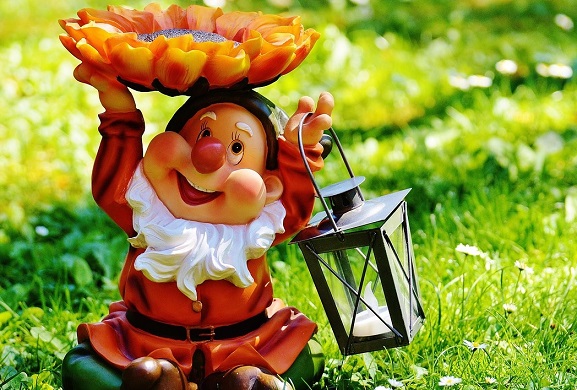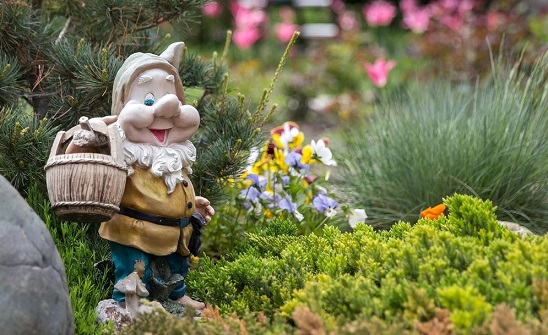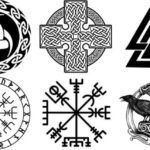
They peer out from behind bushes, lounge beside fountains, and stand sentinel in countless front yards – garden gnomes, or Gartenzwerge, are more than just lawn ornaments in Germany. These bearded, pointy-hatted figurines have achieved a kind of folk-icon status, occupying a curious space between kitsch, tradition, and cultural identity.
But why do Germans love garden gnomes so much? This article explores the surprising origins, enduring popularity, and cultural symbolism of garden gnomes in German society. You’ll discover how these tiny figures went from mythical guardians to mass-produced emblems of gemütlich living – and why they still matter today.
The Origins of the Garden Gnome
Garden gnomes have deep roots in German and European folklore. Their ancestors are the earth spirits of Germanic mythology – beings who dwelled underground and protected hidden treasures. In medieval tales, these creatures were often described as small, bearded men who avoided humans but sometimes helped farmers and craftsmen.
During the Renaissance, alchemists and scholars like Paracelsus popularized the idea of gnomes as elemental spirits representing the earth. This spiritual foundation eventually evolved into more playful interpretations by the 18th and 19th centuries, as romanticism revived interest in folklore and fairy tales across Germany.
By the mid-1800s, German artisans in Thuringia and Saxony began producing clay figurines inspired by these mythical beings. Unlike religious or noble sculptures, these small statues were designed to amuse and decorate. The garden gnome as we know it was born – part folklore, part function, all charm.
For more on Germany’s fascination with myths and spirits, read our article on German Folklore and Fairy Tales.
Gnomes in German Gardens: More Than Decoration
Cultural Symbolism

In Germany, garden gnomes are more than tacky trinkets – they’re associated with hard work, rural wisdom, and quiet protection. Traditional gnomes carry tools like wheelbarrows or pickaxes, symbolizing their role as helpers and caretakers. Their humble appearance and earthy connection reflect a deep German respect for nature, craft, and Ordnung (order).
Placing a gnome in your garden is believed to bring good luck and protection, especially for harvests, flowers, and home security. This blends ancient superstitions with modern domestic pride.
You can explore more about these values in German Traditions and Customs.
Gnomes as a Marker of Identity
The Gartenzwerg also acts as a symbol of German domestic identity, especially in suburban or rural areas. Much like the manicured lawn in America or the tea garden in England, the decorated backyard is a source of quiet pride in Germany.
During the post-war Wirtschaftswunder (economic miracle), the garden gnome became a humorous but comforting marker of stability and modest success. Even today, spotting a row of gnomes in a small town or Schrebergarten (allotment garden) evokes a sense of place and belonging.
The Rise, Fall, and Ironic Return of the Gnome
Popularity in the 20th Century
From the 1950s to the 1970s, gnomes experienced explosive popularity in West Germany. Affordable plastic versions replaced earlier hand-painted ceramics, making them accessible to nearly everyone. Their designs ranged from traditional to absurd – lounging gnomes, mooning gnomes, even beer-drinking gnomes – cementing their reputation as both beloved and ridiculous.
By the 1980s, however, garden gnomes began to fall out of fashion. Younger Germans viewed them as relics of a bygone era – associated with conservative tastes, small-town thinking, and overgrown nationalism. Satirical depictions in film and literature (and eventually internet memes) pushed them into the realm of parody.
Gnomes Go Ironic

Yet something funny happened: instead of disappearing, gnomes returned as ironic icons. Millennials and Gen Z Germans began to reclaim the gnome as a tongue-in-cheek tribute to their grandparents’ generation. You’ll now find gnomes wearing headphones, gnomes protesting climate change, and gnomes painted in rainbow colors at pride parades.
Even high-end art galleries and design studios have played with the form. The gnome has transitioned from earnest folk symbol to postmodern pop object – never fully serious, but always unmistakably German.
Germany’s Gnome Capital: Gräfenroda
Any serious discussion of garden gnomes must include Gräfenroda, a small town in Thuringia where the first gnomes were commercially produced in the 1800s. Today it houses the Garten-Zwerg-Museum, a quirky but charming museum that celebrates the full history of the German garden gnome.
The museum features over 2,000 gnomes in every shape and scenario imaginable, from traditional mining scenes to gnomes riding motorcycles. It’s a must-visit destination for anyone fascinated by German folk art, nostalgia, or eccentric collectibles.
Fun Facts and Gnome Trivia
- The Name “Gnome”: The English word “gnome” likely comes from the Greek genomos (“earth-dweller”). In German, Gartenzwerg literally means “garden dwarf”.
- World Records: Germany holds several world records for the largest gatherings of gnome figurines. One collector reportedly owns over 20,000 gnomes.
- Traveling Gnome Pranks: Inspired by German backpacking culture and 90s internet humor, some pranksters “borrow” garden gnomes and send postcards or photos of them from around the world – a trend that inspired international advertising campaigns.
- Political Gnomes: In the 2000s, a satirical political party in Germany used gnomes in campaign posters, poking fun at establishment politics while appealing to nostalgia.
Gnomes and Modern German Identity
The garden gnome may be small, but its cultural role is huge. It straddles the line between sincerity and irony, nostalgia and mockery. In a country that often grapples with how to celebrate its traditions without becoming overly nationalistic, the gnome is a safe, humorous vehicle for identity.
It’s also deeply democratic. You don’t need to be wealthy or cosmopolitan to own one. You just need a bit of lawn, a touch of whimsy, and a willingness to let a small ceramic man with a shovel represent your connection to the land, your family, and your nation’s peculiar humor.
As Germany becomes increasingly urbanized and globalized, these little figures still remind people of village life, folk wisdom, and the power of everyday charm. They may be laughed at, but they are never ignored.
So, why do Germans love garden gnomes? Because they represent much more than lawn decor. They are playful yet rooted in tradition, modest yet proudly displayed, and old-fashioned yet endlessly adaptable. Whether guarding tomatoes in a suburban garden or striking a pose in a trendy Berlin flat, the Gartenzwerg continues to embody something distinctly, endearingly German.
Curious to learn more about other surprising aspects of German life and folklore? Browse our collection of articles at GermanCulture.com.ua – and maybe next time you spot a garden gnome, give it a little nod of respect.
Related articles:
Germany’s Pagan Past – Explore Germany’s pagan past, from ancient Germanic gods and rituals to the daily lives of tribal warriors and seers. Discover a lost world of myths and traditions.
How the Black Forest Shaped German Mythology and Culture – Explore the Black Forest eerie legends, folklore, and lasting influence on literature and traditions.
Germanic Mythology and Pagan Beliefs – Uncover the myths, gods, and sacred traditions of the Germanic tribes—exploring their spiritual world and how it shaped early German culture.
German Superstitions and Folklore – Discover unusual beliefs, their origins, and how they still influence modern-day Germany.







